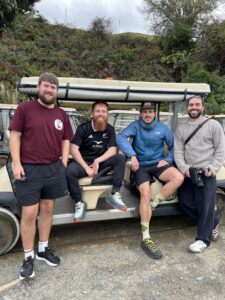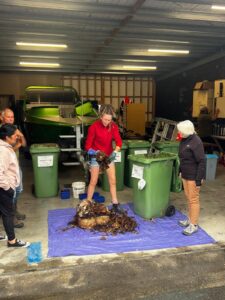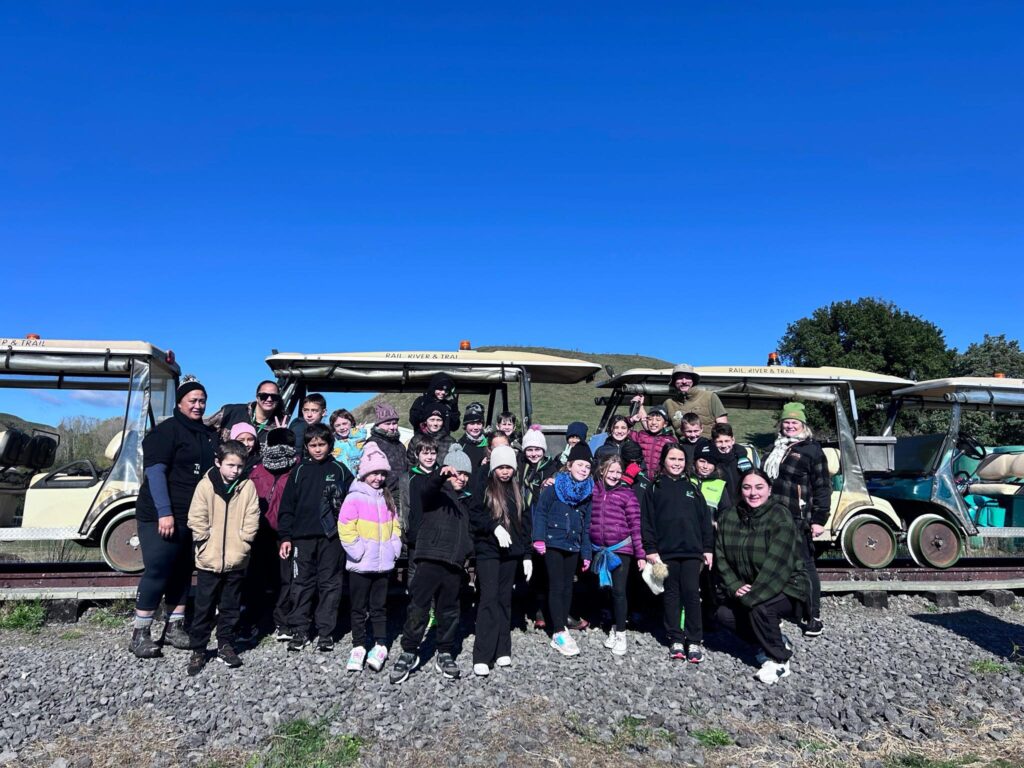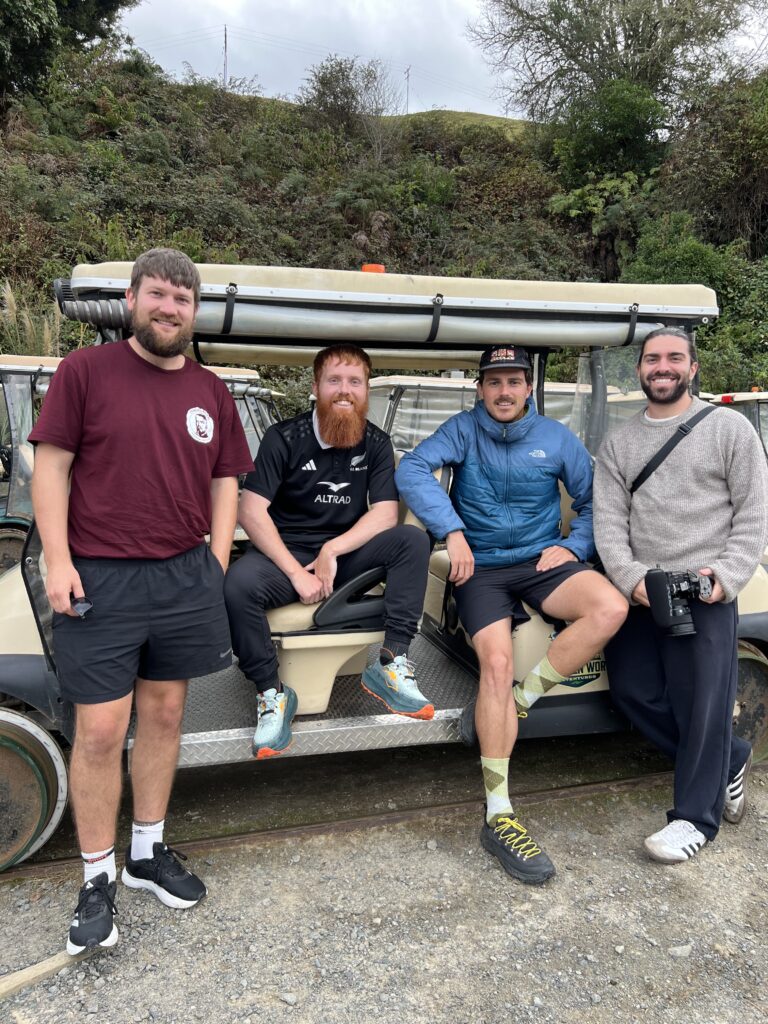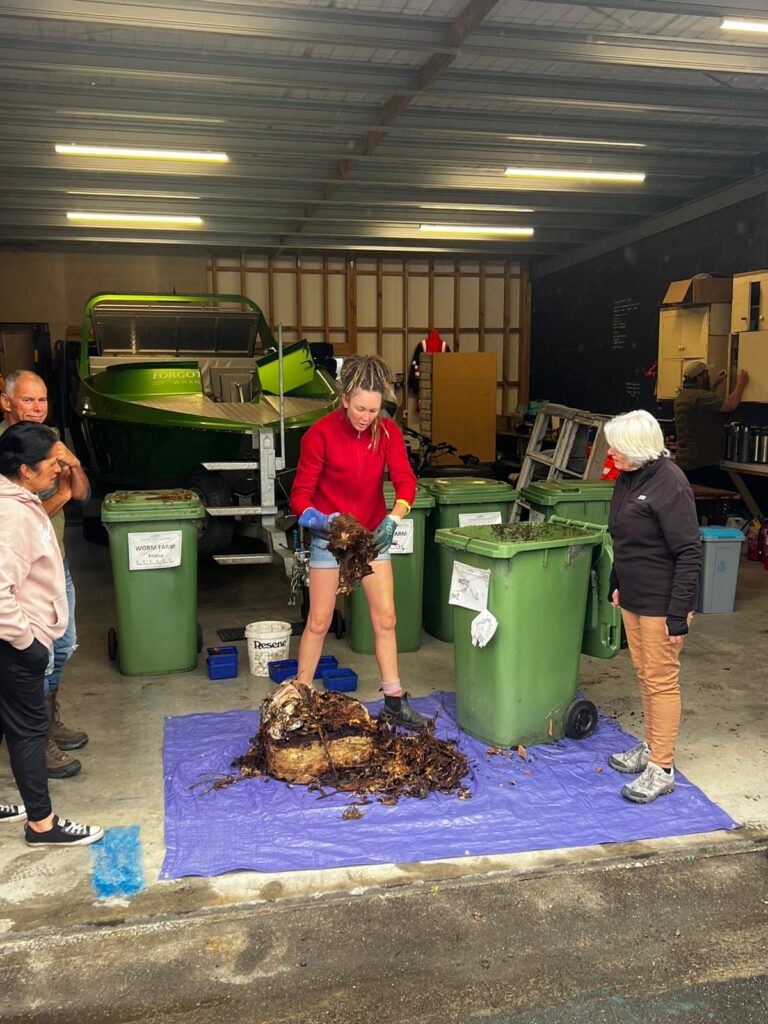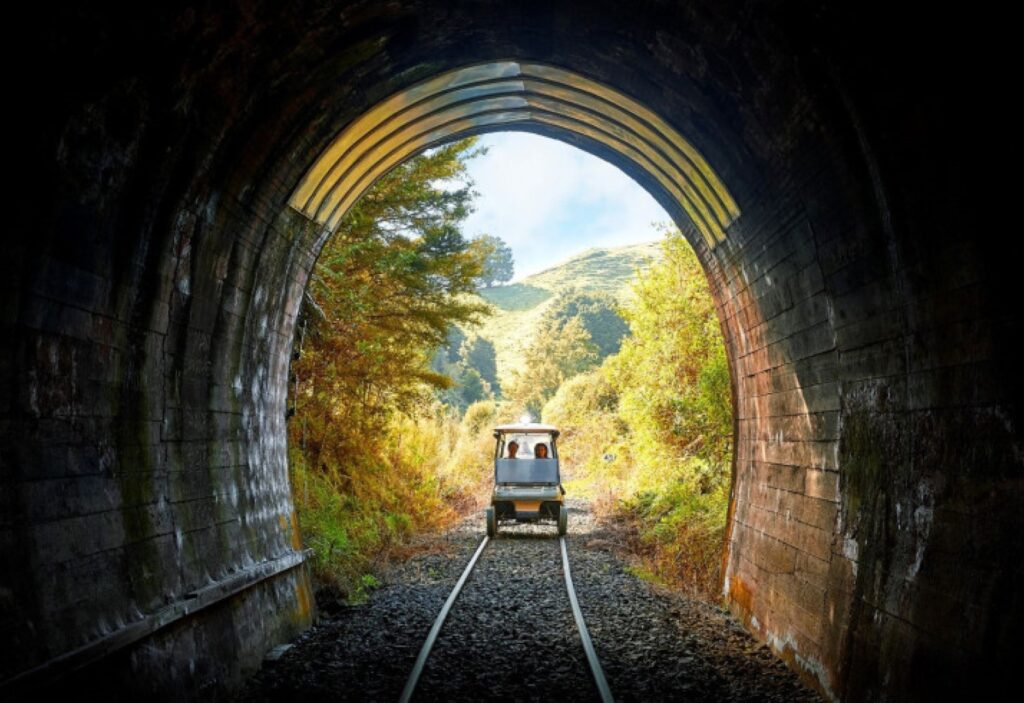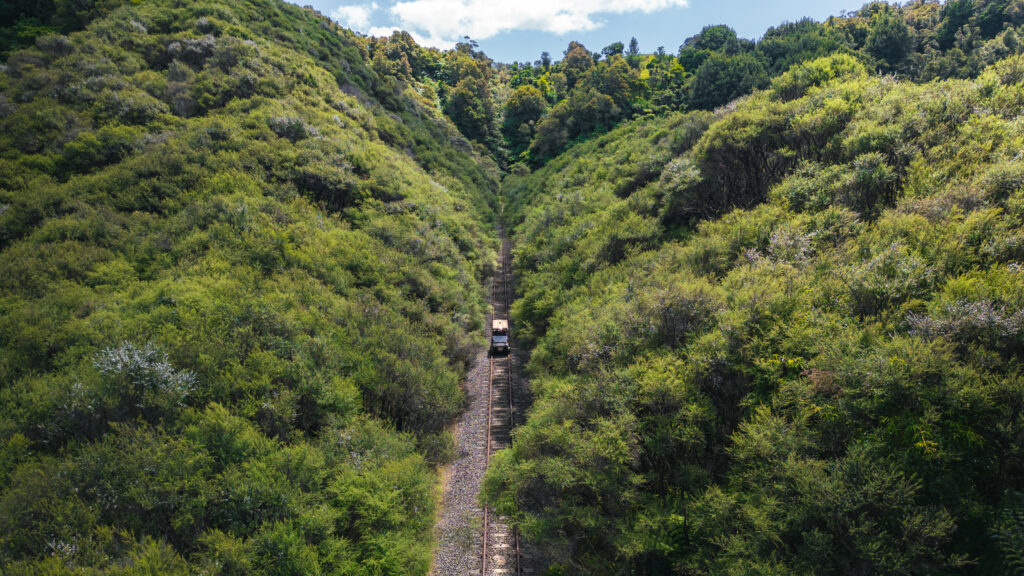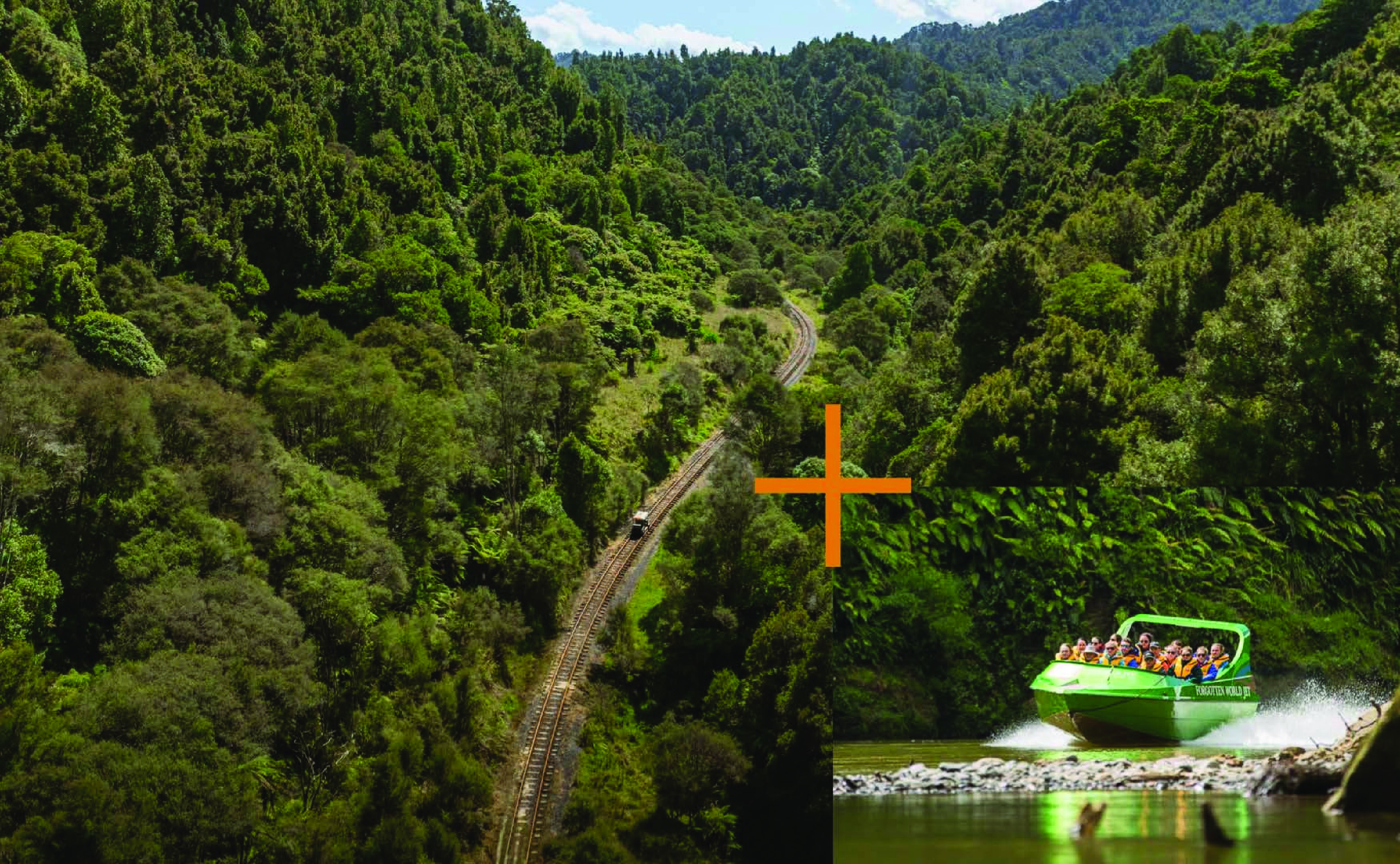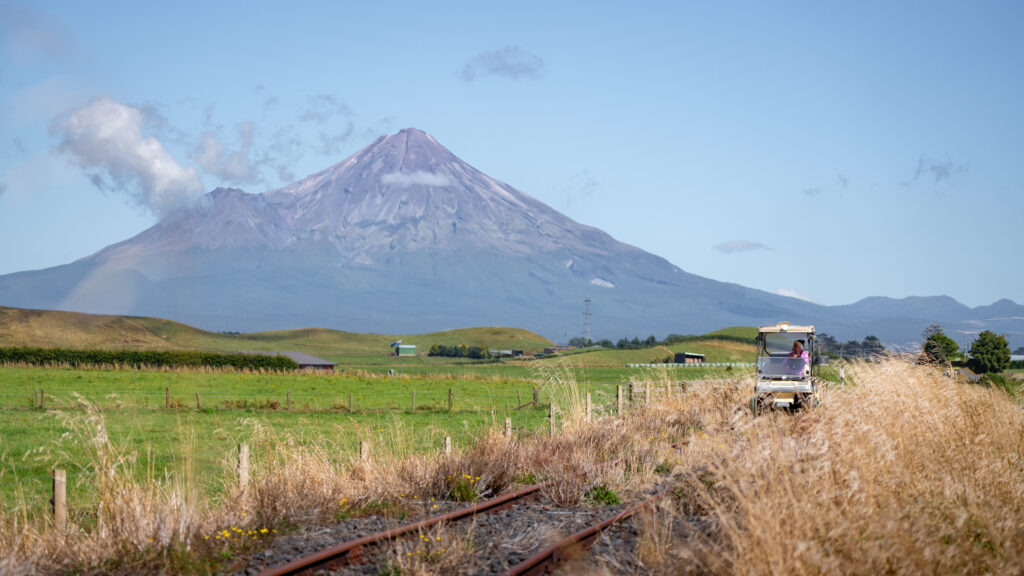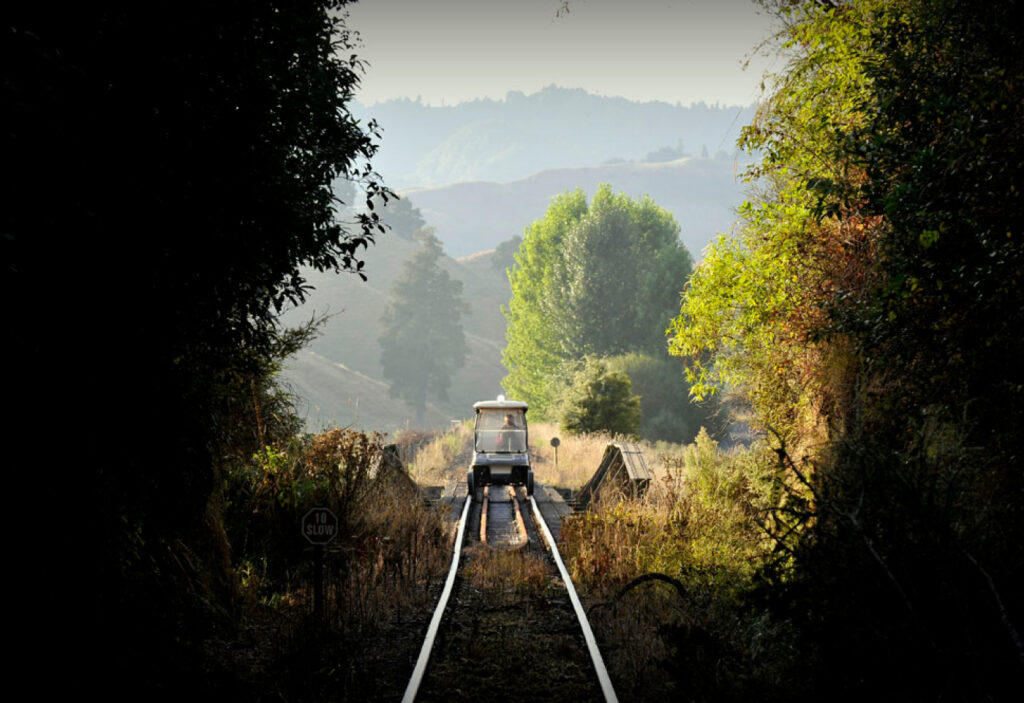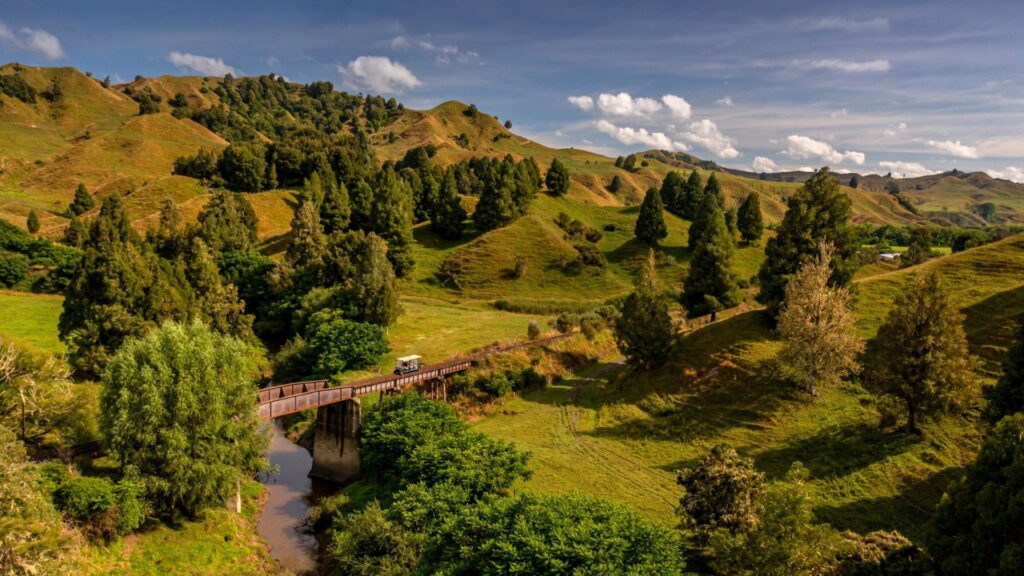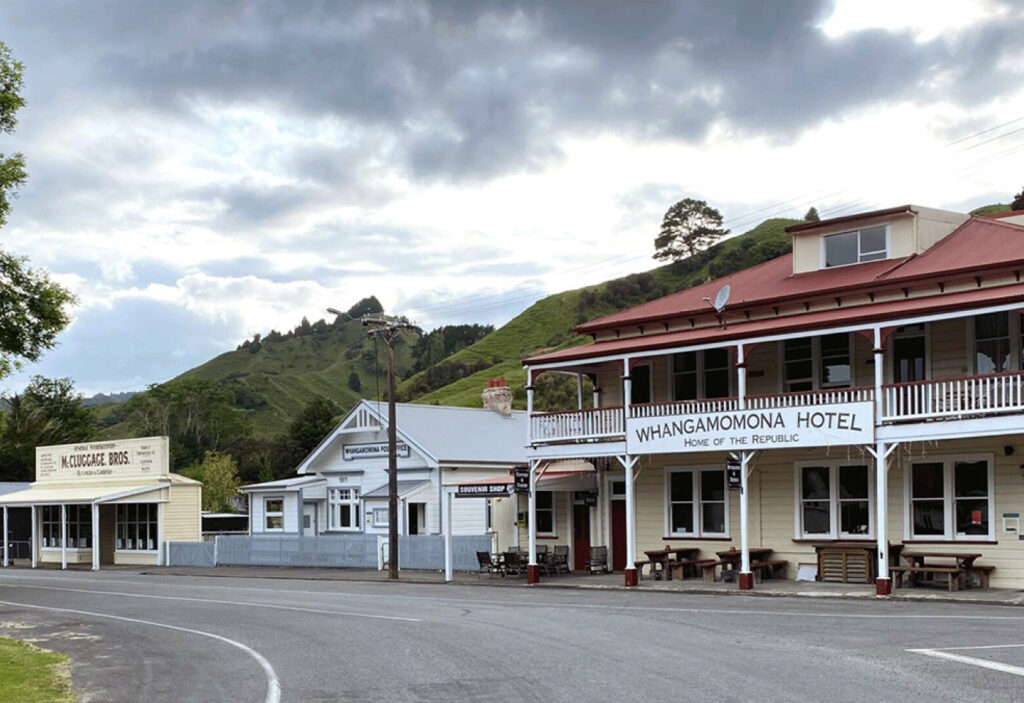Named by Lonely Planet as a key highlight on the Forgotten World Highway, and previously presided over by a goat, a poodle and a turtle, Whangamomona has a fascinating history. Lisa McLean tells us more…
Since the town was established in 1895, the people of Whangamomona have battled harsh geography, brutal weather and economics.
Access was especially difficult in the early years as muddy roads in winter made travel torturously slow, if not impossible. A former Aotuhia resident recalled how boggy Whangamomona Road could get after heavy rain.
“In winter the Whanga Road had mud in places right up to the horses’ girths. The horses suffered from ’mud fever’ whereby they’d lose all their hair round the stomach and half way up their sides.”
The area lacked a good supply of metal for roads so the resourceful pioneers looked for other options. They collected tons of papa rock from hillsides and fired the rock in kilns for days until it was hard enough to create a road surface up to 12 inches thick. The distinctive red roads became a characteristic of the area.
When the rail line from Stratford opened in 1914, Whangamomona flourished. But WW1 hit the county hard and a horrific 1924 flood closed the railway for five months, crippling access to surrounding settlements. Not for the first time in Whangamomona’s history desperate farmers could do nothing but walk off the land.
Whangamomona’s farmers never had it easy. An account from a man who was one of 14 children growing up on a farm sums up the struggle:
“Swagmen used to come and stay the night with us. They were even poorer than us. This one had a strong Irish accent. I remember he got up in the morning, having eaten with us and slept on one of our beds and announced at the breakfast table: ‘I’ll not be coming back to these parts – the people are too poor.’”
The completion of the Stratford to Okahukura line in 1932 boosted the town’s fortunes as Whangamomona hosted train crews and travellers. A hub of the community was the hall which was built in 1903 and still stands today.
There were hundreds of events held at the hall over the years. Between the wars a concert was held to raise funds for WW1 veterans. A local character and farming contractor named Bill Sangster amazed the audience with his incredible dancing ducks. A pianist played while the caged ducks “danced”. As the music got faster, so did the ducks and when it slowed down, so did the ducks. The enthralled audience gave Bill a rapturous applause. One of the stagehands discovered the secret behind the ducks when he saw Bill emerge from under a table with a blowlamp in one hand. The bottom of the ducks’ cage was corrugated iron and when the music played faster, Bill heated up the surface and then pulled away the blowlamp when the music slowed. There wasn’t a branch of the SPCA in Whangamomona at the time.
A big attraction was the hall’s fortnightly cinema nights. On one occasion in the 1940s, the townspeople were so desperate to see the new movie ‘How Green is my Valley’, the MP for Stratford, William Polson, intervened, providing the travelling cinema owners petrol money to get to the town. Despite his help, Vince and Sheila Scanlon set off from Inglewood late in the afternoon, got a puncture, got caught in the rain, then were delayed by a flock of sheep. It was late evening by the time they arrived, but the township was a blaze of lights and the roads lined with cars. Town residents would have waited all night.
In 1943, a devastating fire destroyed the town’s bakehouse, drapery, butchery and billiard room. The high wool prices of the 1950s brought some prosperity to Whangamomona but as decades rolled by it suffered the fate of many small towns as Government services left town.
In 1989 after local government restructuring, Whangamomona was assigned under the Manawatu-Wanganui Regional Council, rather than its Taranaki counterpart with whom locals identified. Whangamomona was outraged.
Former Stratford mayor David Walter was having a beer in the Whangamomona Hotel and remembered how a town in England had declared itself a republic. With tongue in cheek he suggested Whangamomona could do the same. The seed was sown and Whangamomona never looked back.
On November 1 1989 Whangamomona’s new status was declared, complete with a flag and a passport which can be purchased and stamped at the hotel bar to ensure a safe passage through the Republic. Ian Kelstrup was named the town’s first president and sworn in on a hay bail. He duly told the crowd to “keep revolting”.
On the biennial Republic Day celebrations, crowds of up to 5000 enjoy the typically unique entertainment on offer including sheep races, gumboot throwing, whip cracking and possum skinning. There have been stranger events over the years – a sweepstake to guess on which square of field a cow will drop dung; another on how long it would take a car drained of oil and water to seize up.
Although entertaining, Whangamomona’s Republic status is more than a gimmick, but a sign of the rugged independence of the people in this region. A region steeped in history and home to the legendary Whangamomona Hotel, the most remote country hotel in New Zealand and a fine place to share a meal, a pint and a yarn.



